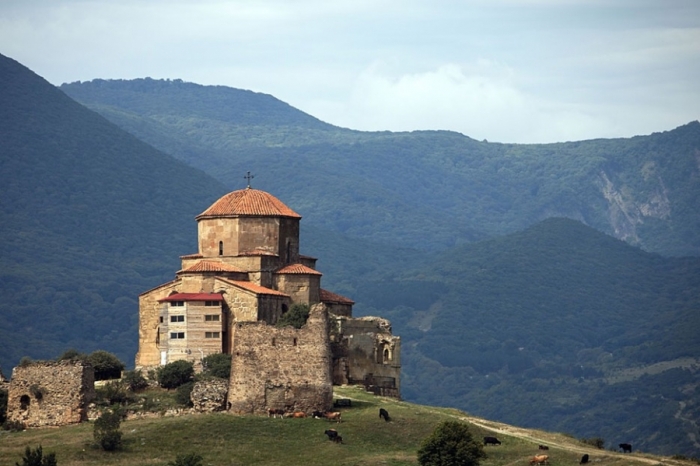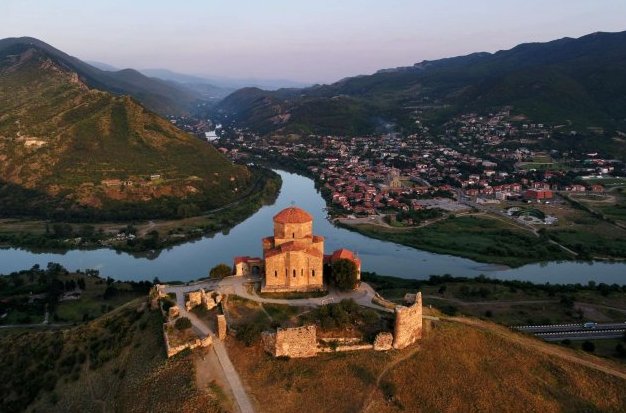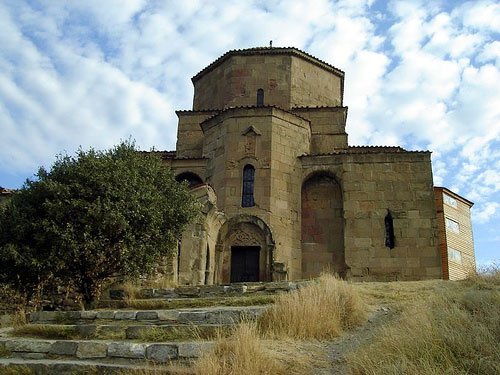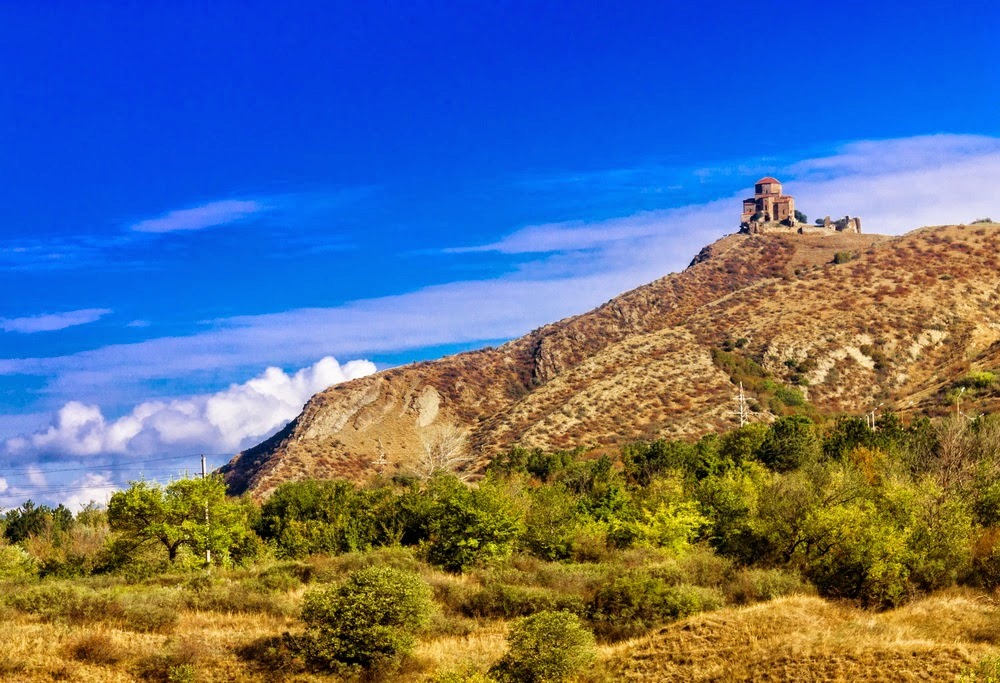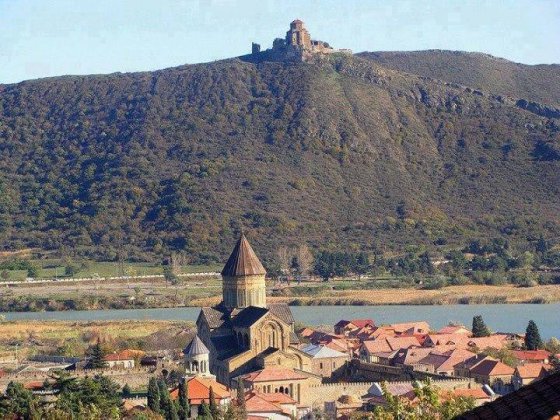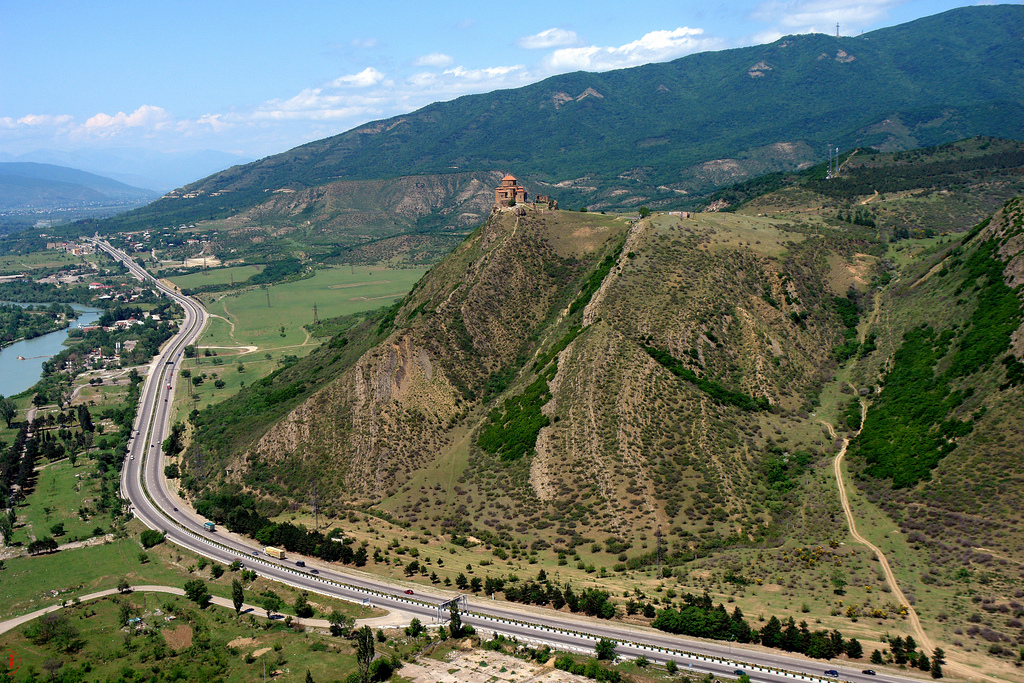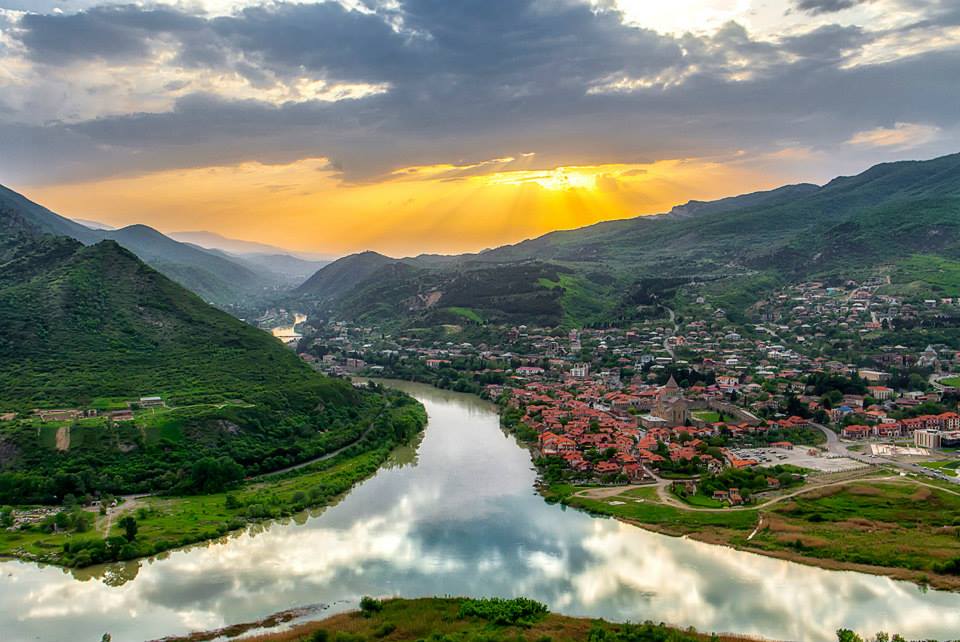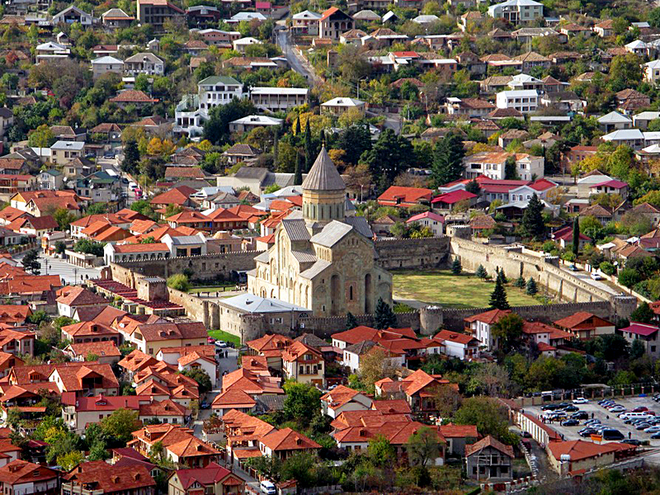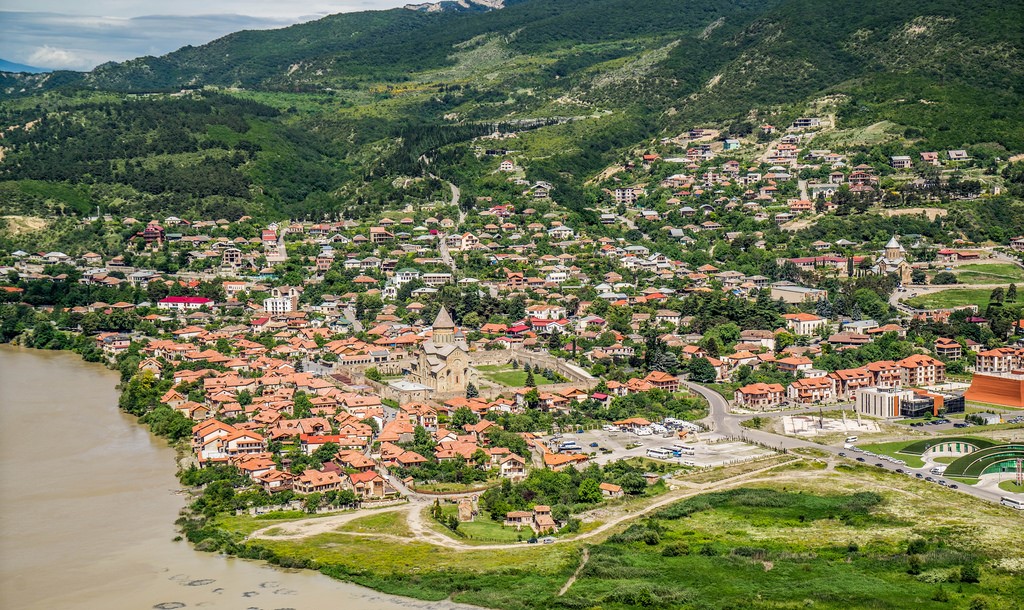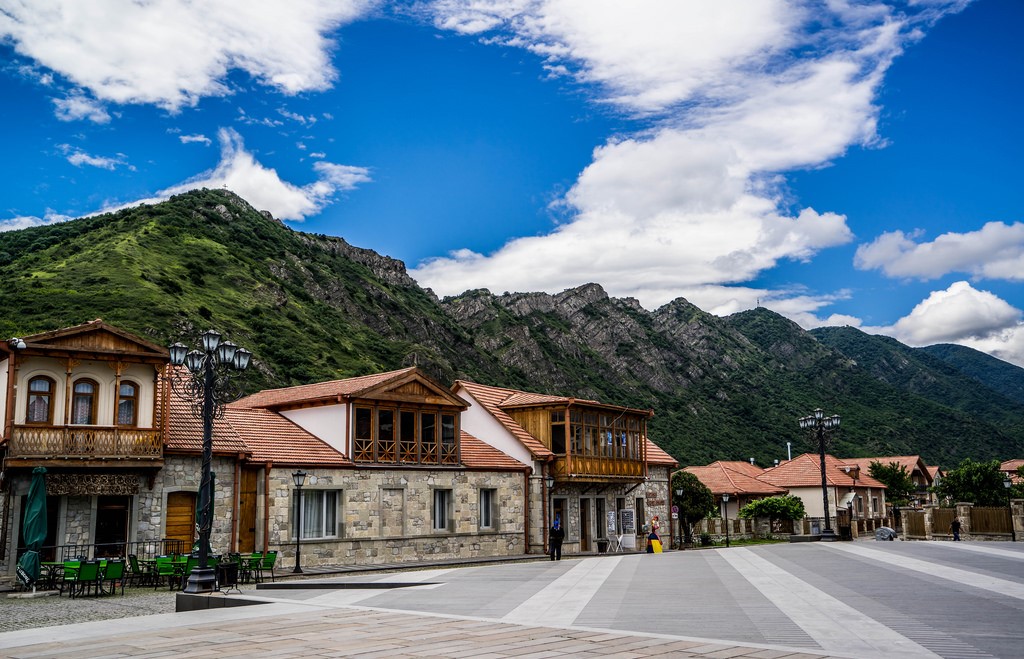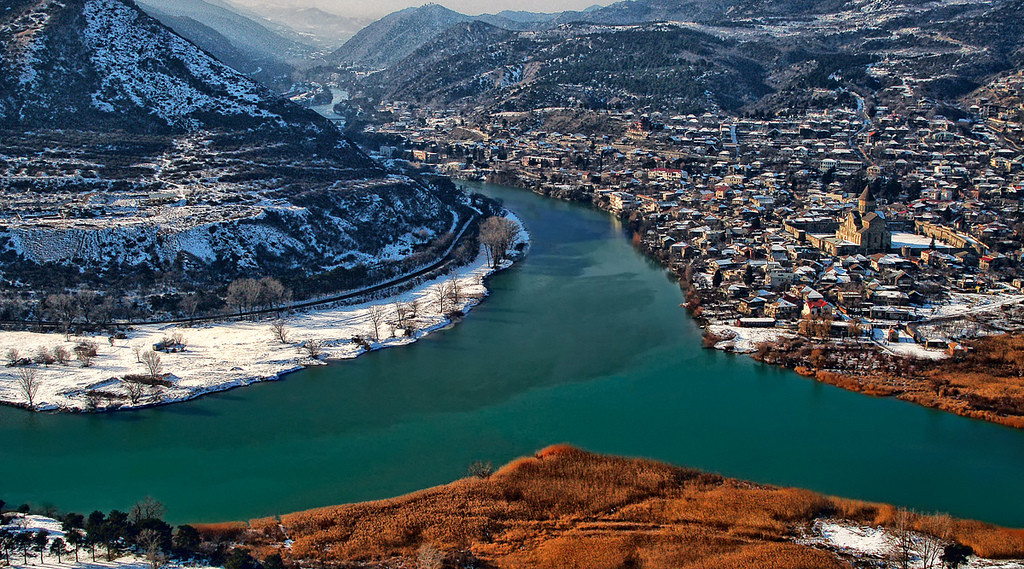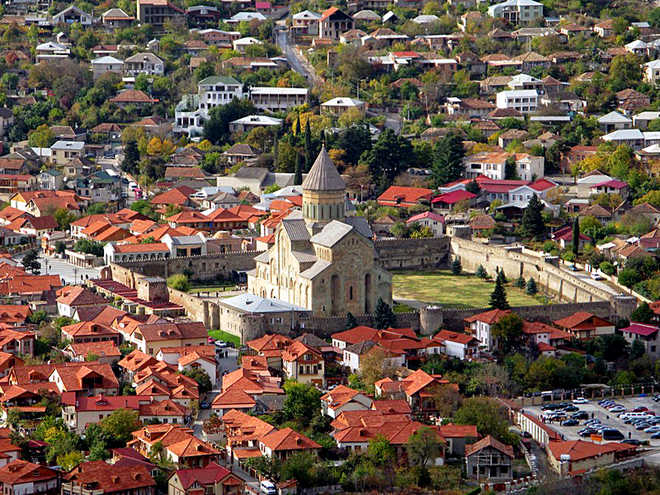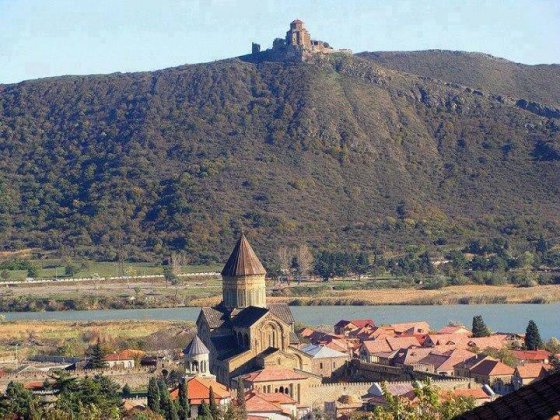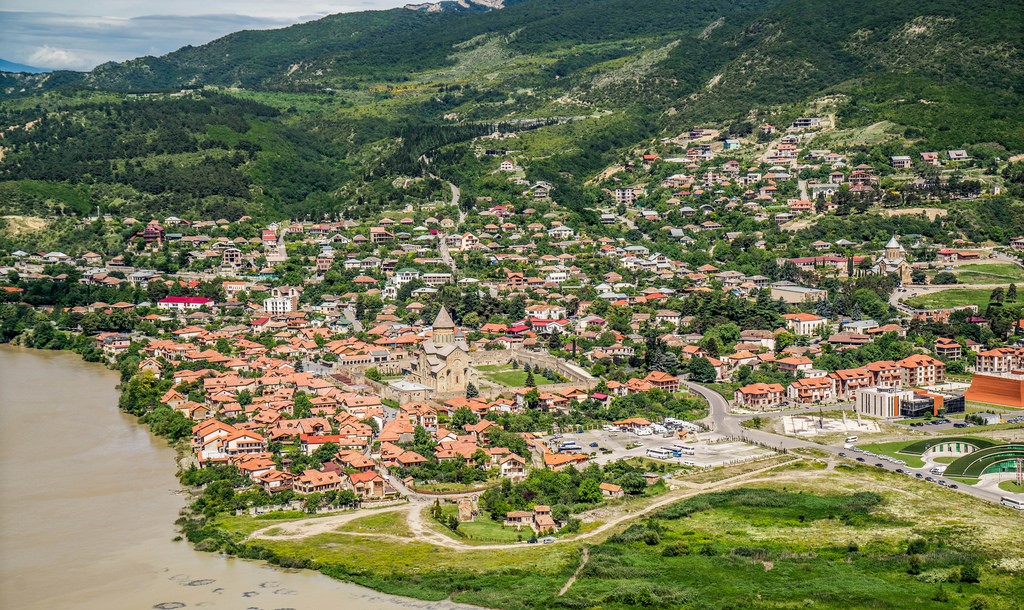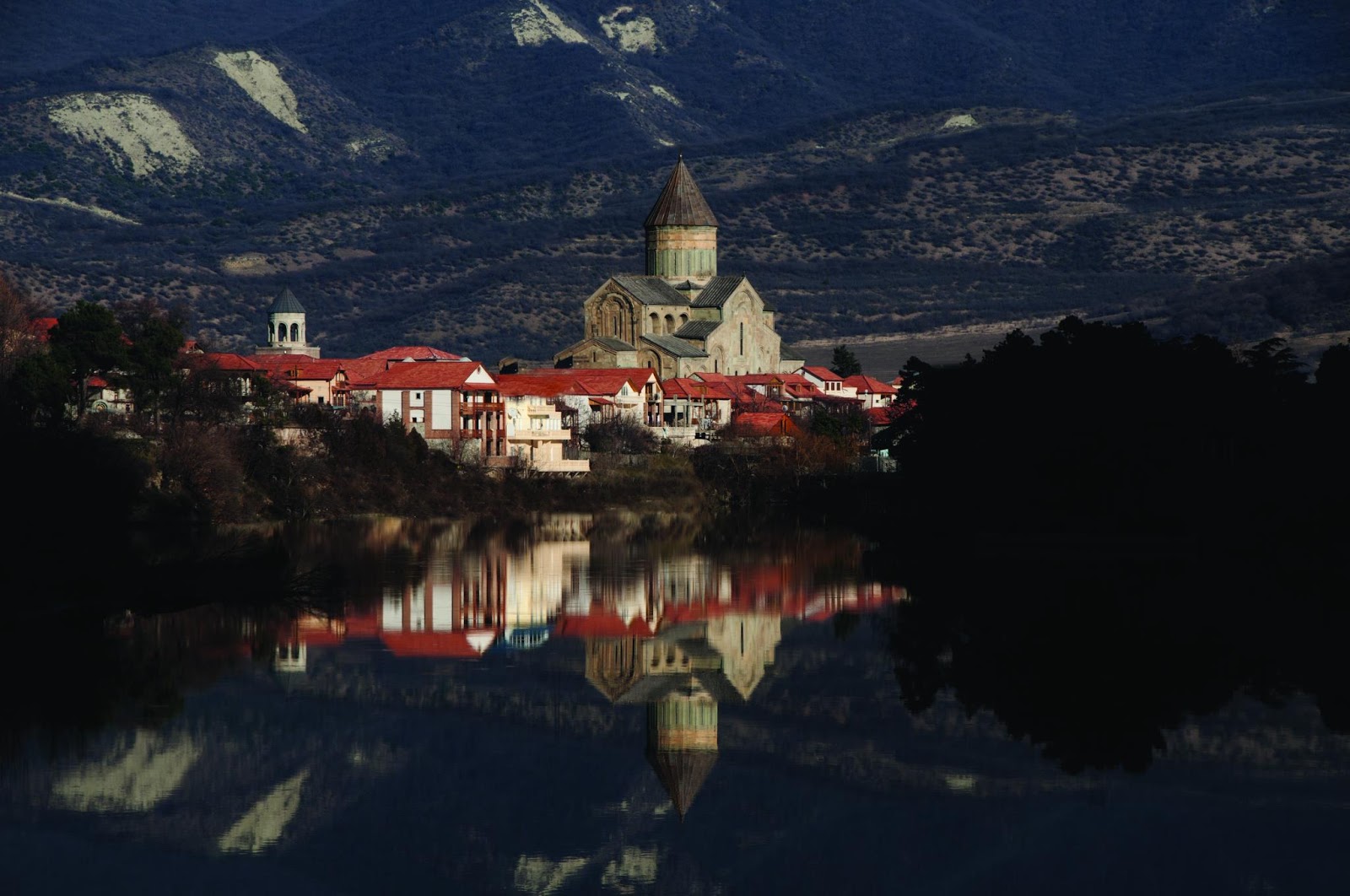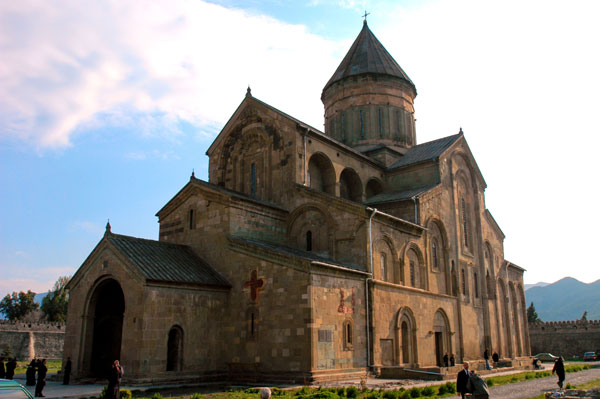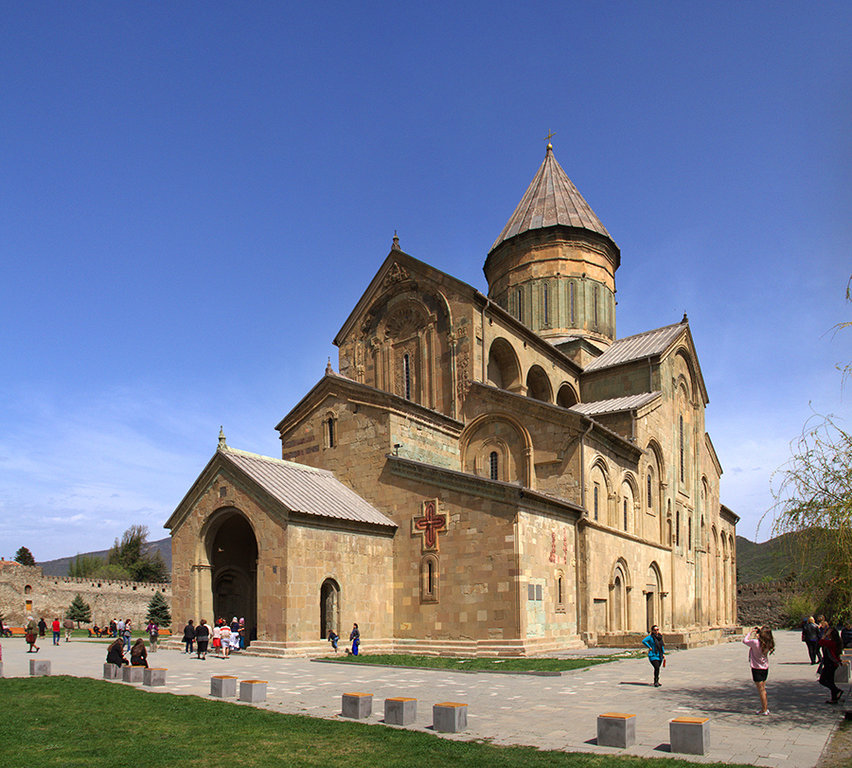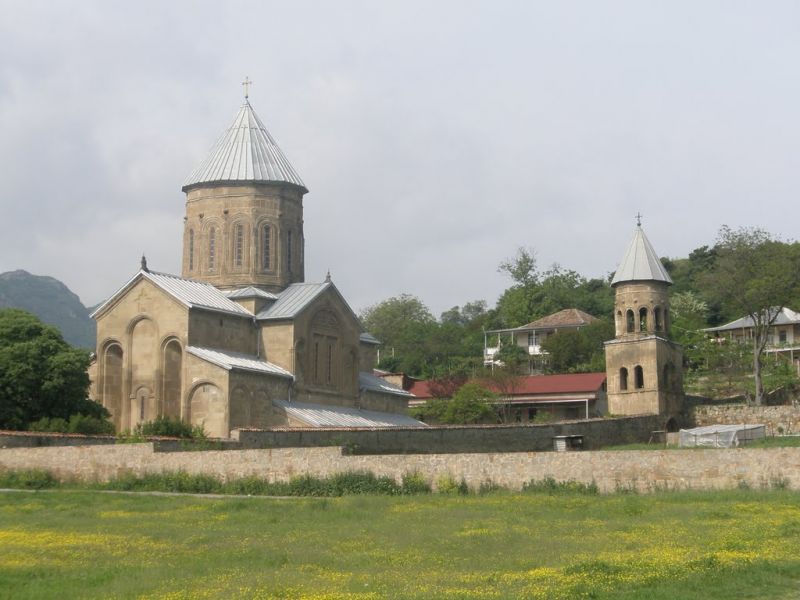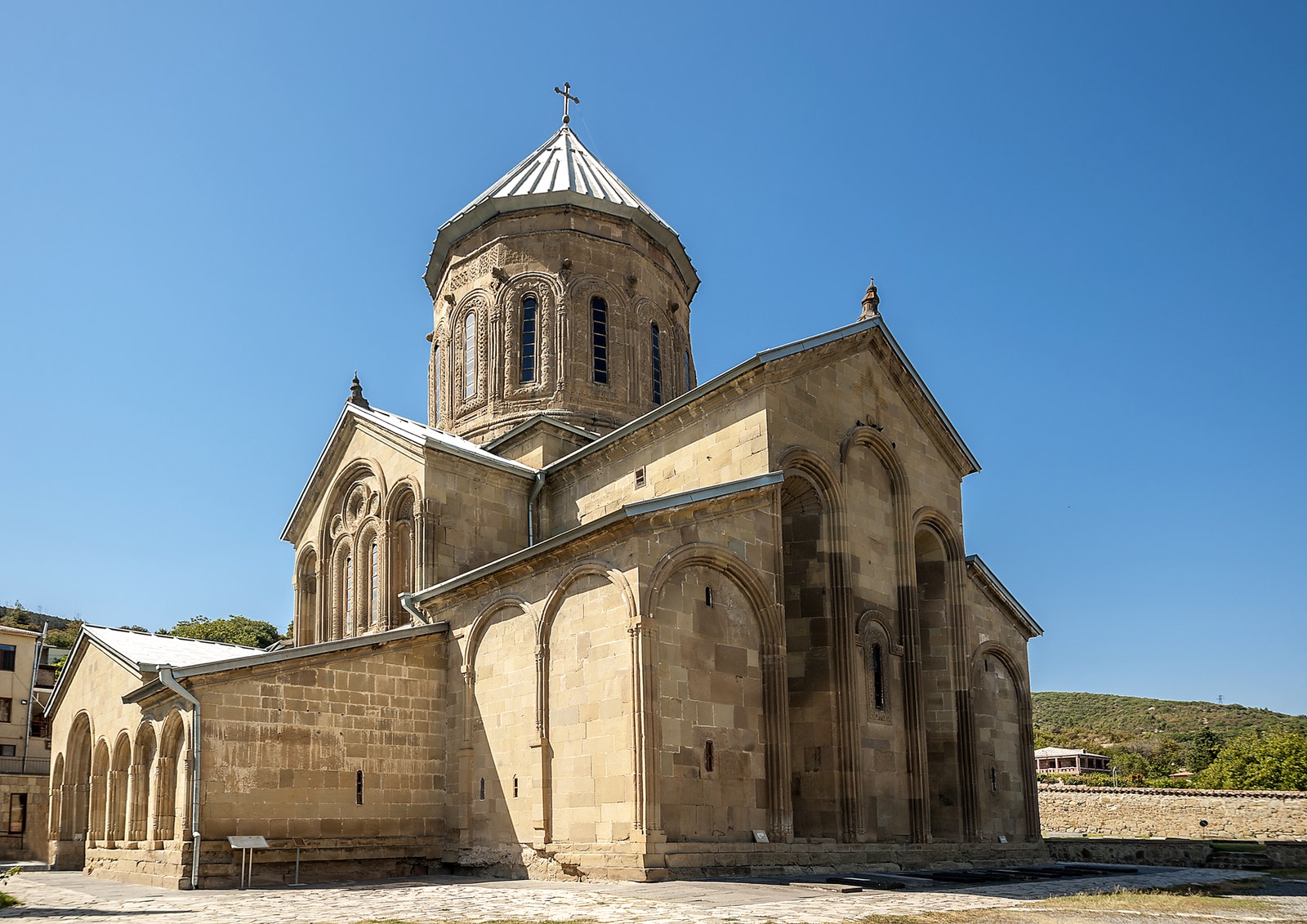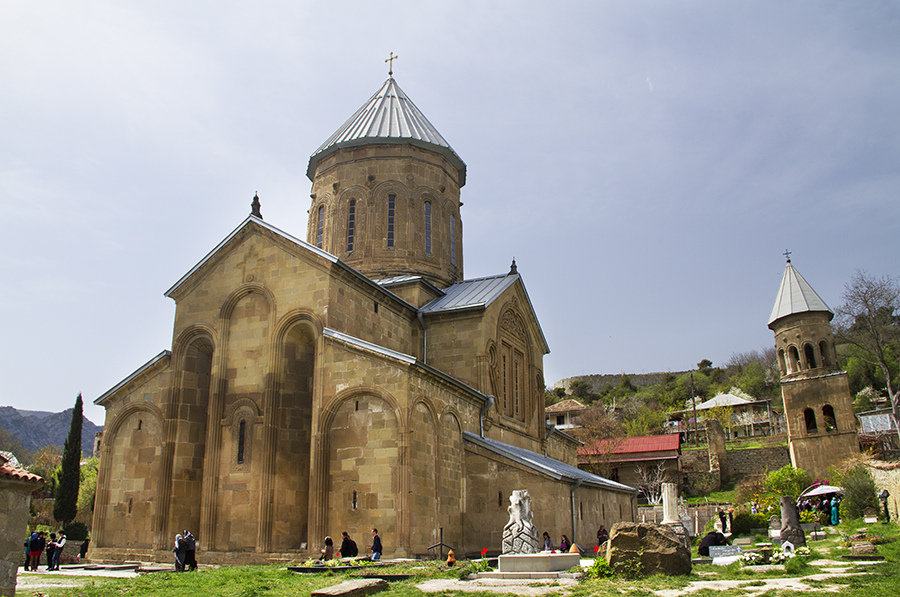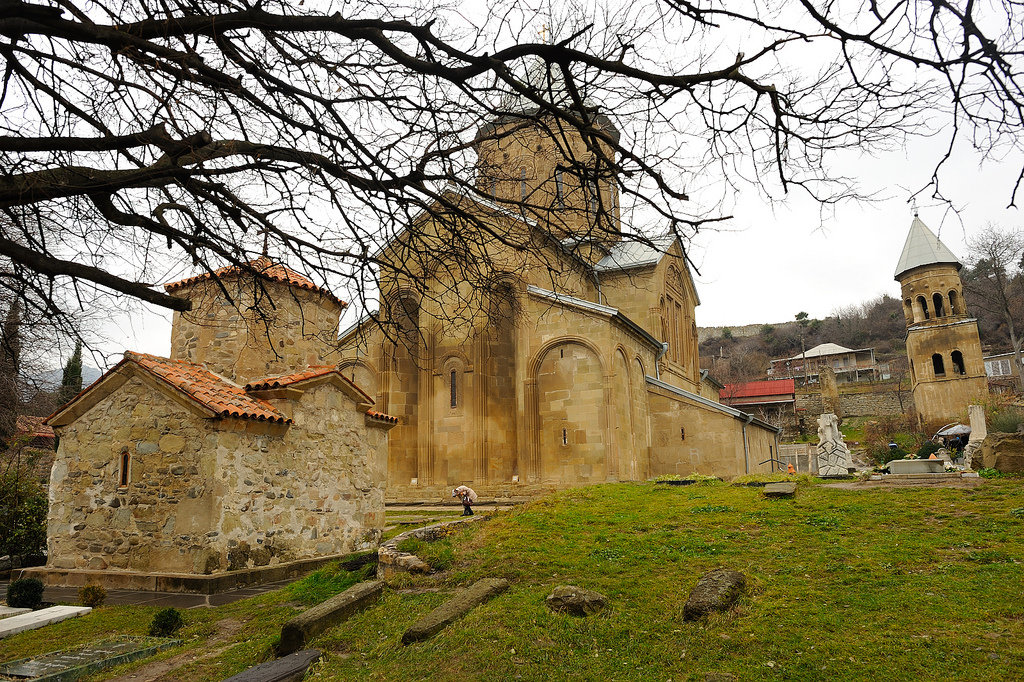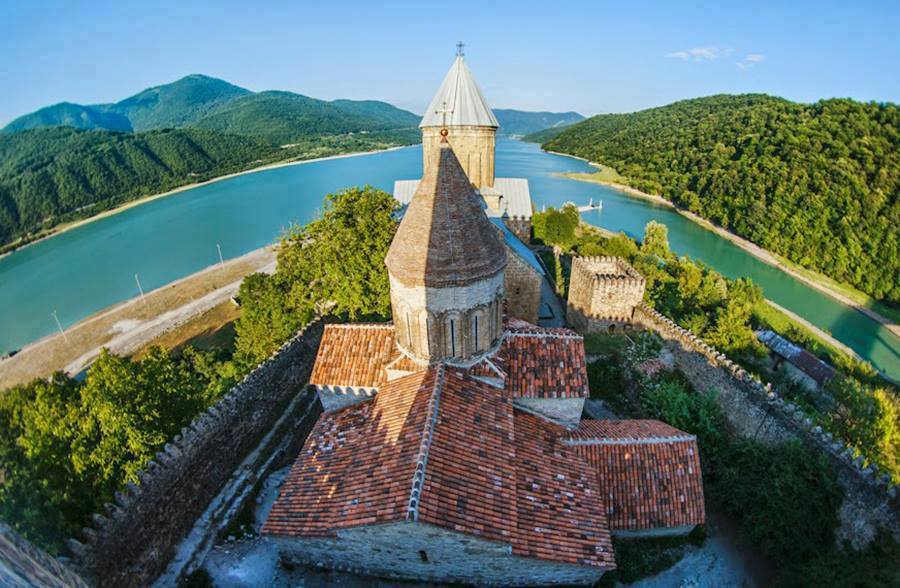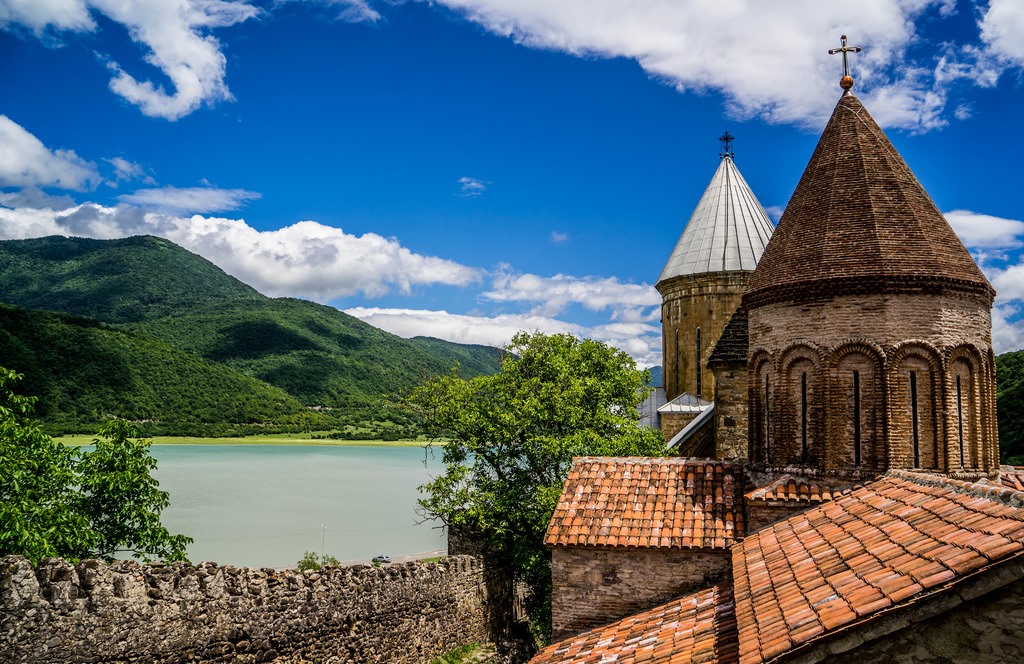TBILISI – JVARI MONASTERY – MTSKHETA – SVETITSKHOVELI CATHEDRAL – BEBRISTSIKHE – SAMTAVRO – SHIO-MGVIME MONASTERY – TBILISI
JVARI MONASTERYshow galleryhide gallery
Jvari Monastery is a sixth century Georgian Orthodox monastery near Mtskheta, eastern Georgia. Along with other historic structures of Mtskheta, it is listed as a World Heritage site by UNESCO.
Jvari Monastery stands on the rocky mountaintop at the confluence of the Mtkvari and Aragvi rivers, overlooking the town of Mtskheta, which was formerly the capital of the Kingdom of Iberia.
According to traditional accounts, on this location in the early 4th century Saint Nino, a female evangelist credited with converting King Mirian III of Iberia to Christianity, erected a large wooden cross on the site of a pagan temple. The cross was reportedly able to work miracles and therefore drew pilgrims from all over the Caucasus. A small church was erected over the remnants of the wooden cross in c.545 named the “Small Church of Jvari”.
The present building, or “Great Church of Jvari”, is generally held to have been built between 590 and 605 by Erismtavari Stepanoz I. This is based on the Jvari inscriptions on its facade which mentions the principal builders of the church: Stephanos the patricius, Demetrius the hypatos, and Adarnase the hypatos. Professor Cyril Toumanoff disagrees with this view, identifying these individuals as Stepanoz II, Demetre (brother of Stepanoz I), and Adarnase II (son of Stepanoz II), respectively.
The importance of Jvari complex increased over time and attracted many pilgrims. In the late Middle Ages, the complex was fortified by a stone wall and gate, remnants of which still survive. During the Soviet period, the church was preserved as a national monument, but access was rendered difficult by tight security at a nearby military base. After the independence of Georgia, the building was restored to active religious use. Jvari was listed together with other monuments of Mtskheta in 1994 as a UNESCO World Heritage Site.
However, over the centuries the structures suffered damage from rain and wind erosion and inadequate maintenance. Jvari was listed in the 2004 World Monuments Watch list by the World Monuments Fund.
MTSKHETAshow galleryhide gallery
Mtskheta is a city in Mtskheta-Mtianeti province of Georgia. One of the oldest cities of Georgia, it is located approximately 20 kilometres (12 miles) north of Tbilisi at the confluence of the Aragvi river.
Due to its historical significance and several cultural monuments, the “Historical Monuments of Mtskheta” became a UNESCO World Heritage Site in 1994. As the birthplace and one of the most vibrant centers of Christianity in Georgia, Mtskheta was declared as the “Holy City” by the Georgian Orthodox Church in 2014
Mtskheta was founded in the 5th century BC. It was capital of the early Georgian Kingdom of Iberia (Kartli) from the 3rd century BC to the 5th century AD. It was a site of early Christian activity, and the location where Christianity was proclaimed the state religion of Kartli in 337. It remains the headquarters of the Georgian Orthodox Church.
King Dachi I Ujarmeli (early 6th century AD), who was the successor of Vakhtang I Gorgasali, moved the capital from Mtskheta to the more easily defensible Tbilisi according to the will left by his father. However, Mtskheta continued to serve as the coronation and burial place for most kings of Georgia until the end of the kingdom in the 19th century.
The old city lies at the confluence of the rivers Mtkvari and Aragvi. The rare blend of cultural values had ruled in this part of the world since the Bronze Age until prosperous Christian era over the unique eclectic lifestyle creating the mood of the town which is as old as the history of Georgia. Mtskheta is the most religious city of Georgia as it has been the shrine of pagan idols since times immemorial and it is where Christianity in Georgia takes its origin.[citation needed]
In recognition of its role in the Georgian Christian history, Mtskheta was granted the status of a “Holy City” by Catholicos-Patriarch Ilia II of Georgia in accordance of the written testament of his 11th-century predecessor Melchizedek I of Georgia.
SVETITSKHOVELI CATHEDRALshow galleryhide gallery
The Svetitskhoveli Cathedral is an Eastern Orthodox cathedral located in the historic town of Mtskheta, Georgia, to the northwest of the Georgian capital Tbilisi. A masterpiece of the Early Middle Ages, Svetitskhoveli is recognized by UNESCO as a World Heritage Site. It is currently the second largest church building in Georgia, after the Holy Trinity Cathedral.
Known as the burial site of Christ’s mantle, Svetitskhoveli has long been one of the principal Georgian Orthodox churches and is among the most venerated places of worship in the region. The present structure was completed in 1029 by the medieval Georgian architect Arsukisdze, although the site itself dates back to the early fourth century.
Svetitskhoveli is considered an endangered cultural landmark; it has survived a variety of adversities, and many of its priceless frescoes have been lost due to being whitewashed by the Russian Imperial authorities.
SAMTAVROshow galleryhide gallery
Samtavro Transfiguration Orthodox Church and Nunnery of St. Nino in Mtskheta, Georgia, were built in the 4th century by King Mirian III of Iberia. The church was reconstructed in the 11th century by King George I and Catholicos-Patriarch Melkisedek. The famous Georgian monk Gabriel is buried in the yard of Samtavro Church.
SHIO-MGVIME MONASTERYshow galleryhide gallery
The Shio-Mgvime monastery is a medieval monastic complex in Georgia, near the town of Mtskheta. It is located in a narrow limestone canyon on the northern bank of the Mtkvari River, some 30 km from Tbilisi, Georgia’s capital.
According to a historic tradition, the first monastic community at this place was founded by the 6th-century monk Shio, one of the Thirteen Assyrian Fathers who came to Georgia as Christian missionaries. St. Shio is said to have spent his last years as a hermit in a deep cave near Mtskheta subsequently named Shiomghvime (“the Cave of Shio”) after him. The earliest building – the Monastery of St. John the Baptist – a cruciform church, very plain and strict in its design, indeed dates to that time, c. 560s-580s, and the caves curved by monks are still visible around the monastery and along the road leading to the complex. The church has an octagonal dome covered with a conic floor and once housed a masterfully ornate stone iconostasis which is now on display at the Art Museum of Georgia in Tbilisi. The monastery was somewhat altered in the 11th and 18th centuries, but has largely retained its original architecture.
The Upper Church (zemo eklesia) named after the Theotokos is a central part of the Shio-Mgvime complex constructed at the verge of the 12th century at the behest of King David IV of Georgia. Initially a domed church, it was subsequently destroyed by a foreign invasion and restored, in 1678, as a basilica. A refectory was built between the 12th and 17th centuries and directly communicates with the Cave of St. Shio. A 12th-century small chapel adorned with medieval murals stands separately on a nearby hill.
An archaeological expedition revealed, in 1937, a 2 km long aqueduct supplying the monastic communities from the nearby village of Skhaltba, and chronicled in 1202 as being constructed by Bishop Anton of Chkondidi, a minister at Queen Thamar’s court.

